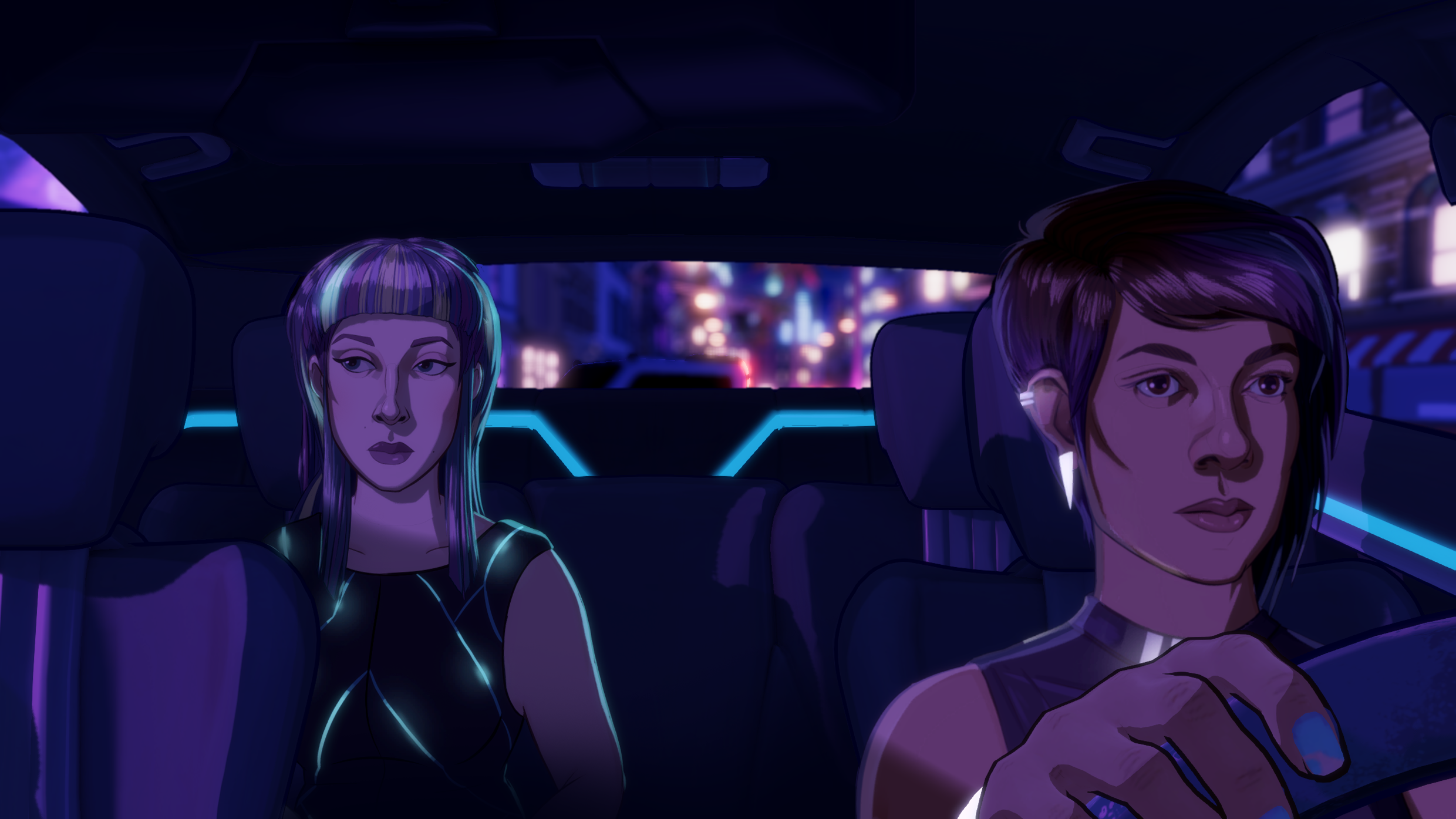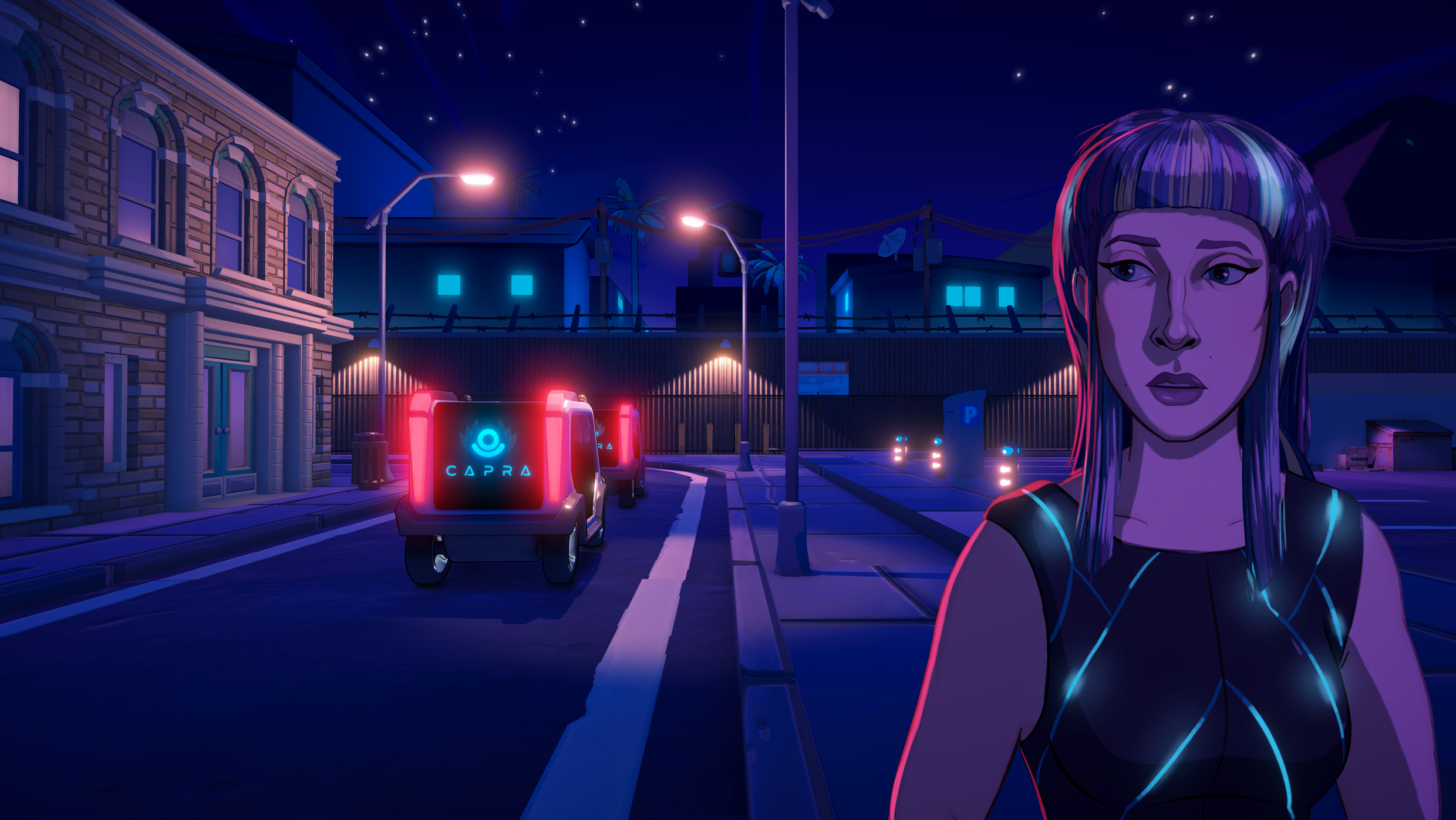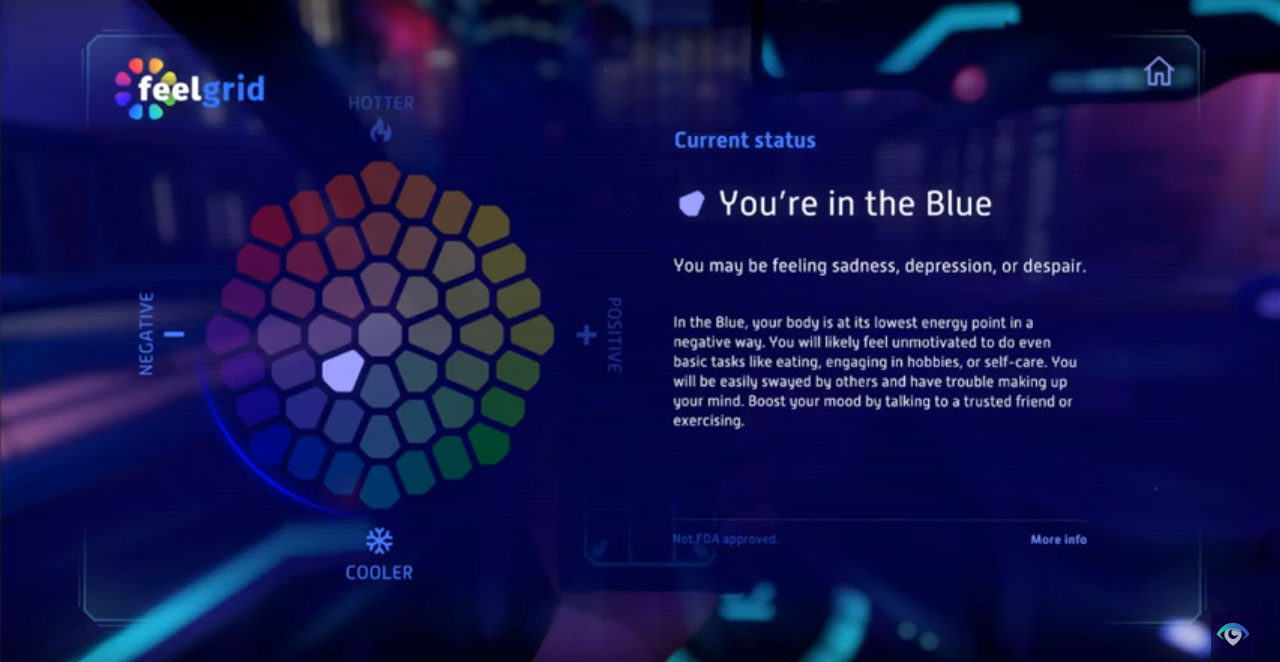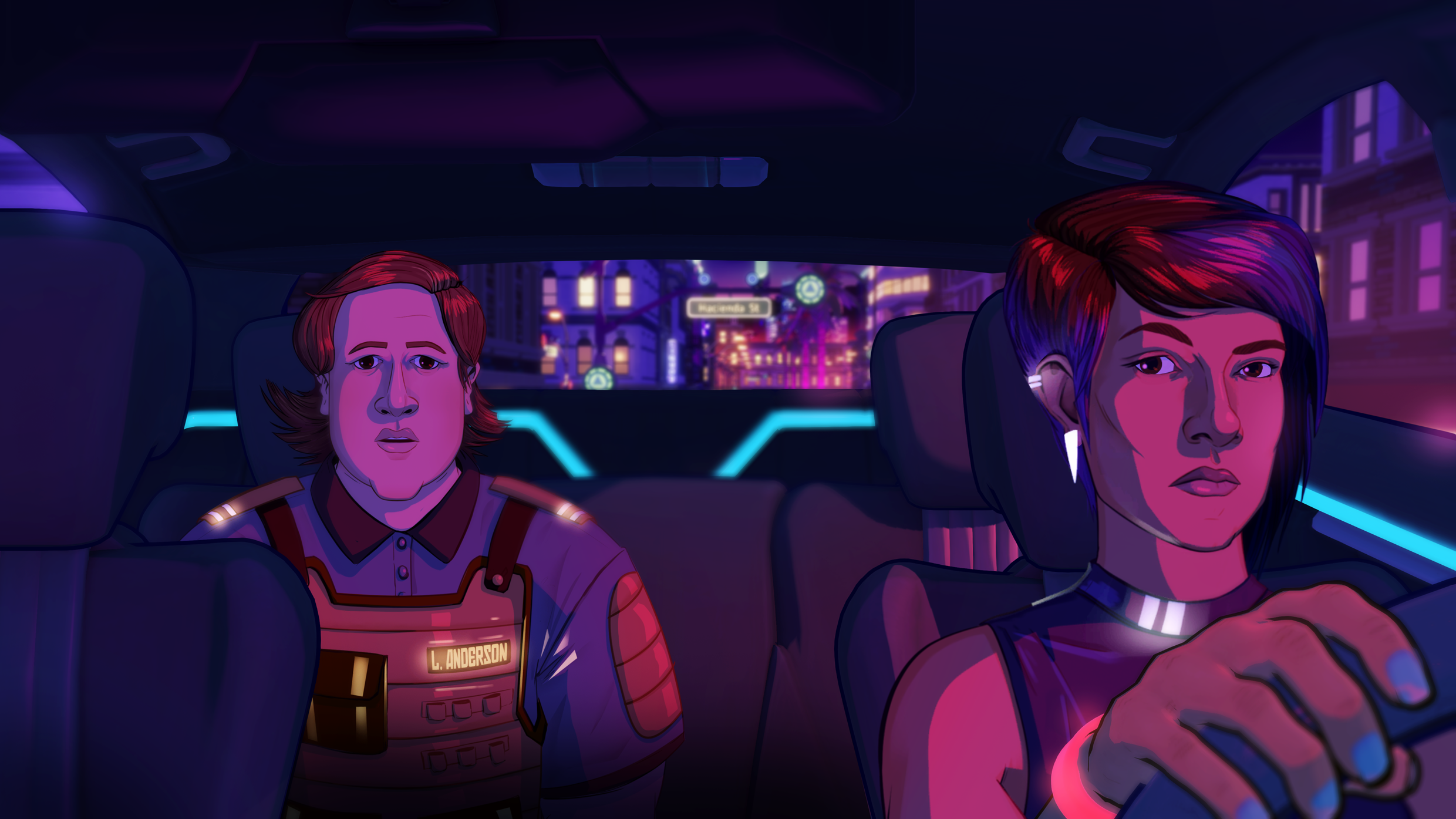Cliqist continues its discussion with Chance Agency creative director Patrick Ewing about what makes Neo Cab an emotional survival game. (The previous part can be found here.)
While exhibiting at IndieCade during E3 2019, Ewing not only oversaw demos of Neo Cab—both the short and complete versions—but also took the time to talk about the game in-depth.

After a period of estrangement, Lina briefly reunites with her best friend, Savy.
Playing with Feelings
Ewing explained that the team felt Neo Cab would ring more true to the rideshare driver experience if it used emotional health as a gameplay mechanic. He added that the team also thought it would be more interesting to have an emotional range in a game of chance and choice. For this emotional choice aspect in Neo Cab, Ewing said they found another influence in Zoë Quinn’s Depression Quest.
It’s this emotional mechanic that can limit Lina’s choices sometimes. Her emotional state has to fit with her decisions. If they don’t, they’re not accessible to the player.

Savy seemed to act strangely before she disappeared.
However, Lina’s feelings won’t be so consistent that they feel too artificial either. She may not comply with whatever dialogue option the player wants. She may not allow abrupt U-turns that diverge too far from her backstory or personality. But she won’t be perfectly aligned with any one emotion either.
Technicolor Mood
The game visualizes this emotional variation with the colorful Feelgrid, a hi-tech bracelet Lina wears. It’s armed with bio-sensors that can—as the game puts it—read her body like a mood ring that actually works.
The colors break down simply at first, with Lina’s bracelet turning red when she’s angry, blue when she’s sad, etc. But the Feelgrid comes with a wide range of colors in different shades, suggesting more nuances of emotion. Red and blue could probably combine to indicate equally mixed emotions of anger and sadness.

Technical artist and UX designer Laura Sly discussed the development of the Feelgrid during a talk from LudoNarraCon. This was a digital convention hosted by Neo Cab‘s publisher, Fellow Traveller.
“It changes Lina’s dialogue,” Ewing said when discussing the Feelgrid. “Always branching subtly on what emotional color she’s in.”
For example, he explained that based on what color Lina falls on the Feelgrid, even the same piece of dialogue will sound different.
Ewing said that Neo Cab’s approach to emotion as a gameplay mechanic is largely based on the Circumplex, a model used by researchers. The Feelgrid basically adds color to this model.
What Moves You
Lina’s former employer Capra is a clear sore spot for her, suggesting that there’s a pattern to her emotions. Ewing shared that the team’s writers had to figure out various things about Lina’s character for this—like what angers her, and how does Lina act when she’s angry? What chills her out, and what moves her to different states of emotion?

Neo Cab plays out over six nights. Ewing said people can choose to pick up the same characters and go deeper into their stories, or they can pick up someone new.
With emotion-driven choices and the Feelgrid, players are clearly encouraged to keep track of Lina’s emotional state in an effort to know what gameplay actions are available to them at any given moment.
According to Ewing, the team hopes that this emotional nuance will add to game replayability, especially because Lina’s emotions persist from ride to ride. There is no emotional reset button for her.
“We are not the same person day to day or even moment to moment,” Ewing said.
Don’t Judge Emotions
Players can even choose what Lina’s thinking about, which could change her mood for better or worse. Ewing commented that having Lina internally dwell on something that makes her feel negative likely won’t improve her emotional state.
However, Ewing also shared that feelings aren’t automatically and comprehensively right or wrong. While Ewing explained that the game should respond to emotional state, and emotional state should lead to complex dialogue, there is no wrong emotion.
“There’s no such thing as a bad emotion,” Ewing said. “Sometimes anger is very justified.”

Lina’s Feelgrid bracelet turns red when she has to deal with a drunk and rude passenger.
“Sometimes being angry can be a good thing for Lina,” Ewing said. “There is a time and place for every emotion, including anger, including sadness.”



